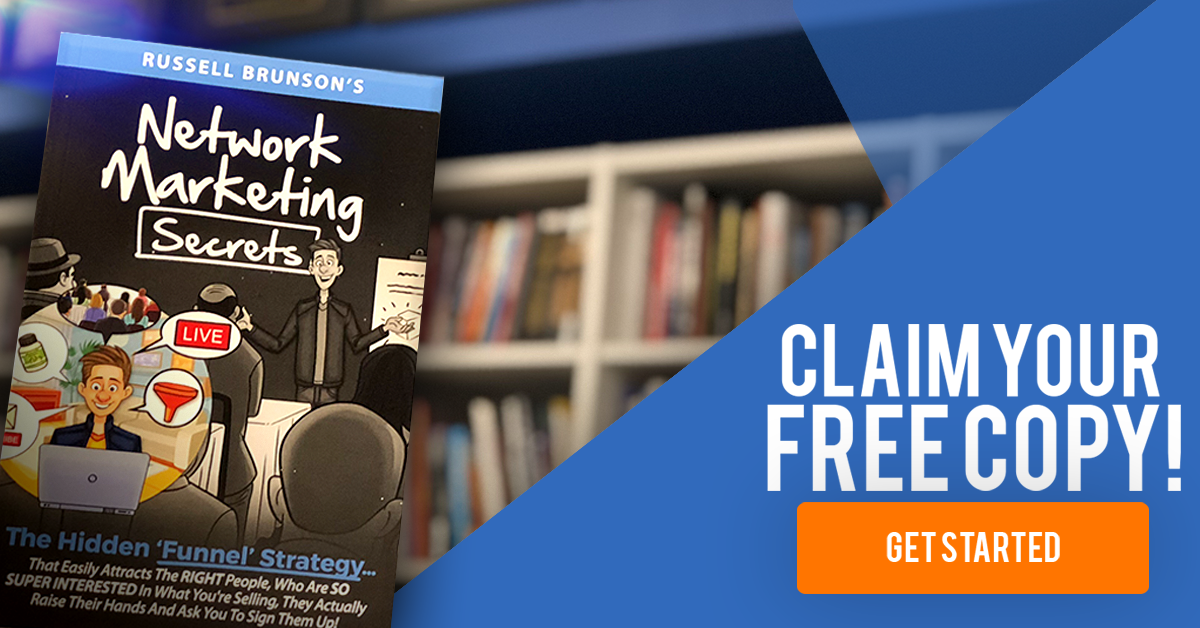I was a mad scientist, head down in the lab building the brand Change Creator, my second business. But this time around, there was something different.
My first business was a record label—AlterImage Recordings—and I had a co-founder. This time, I was flying solo.
During the first year, I didn’t come out of the “lab” too much using cool tools like Facebook Live. At some point during year two, I created an awkward monologue video that did a quick review of the first year.
A key takeaway I shared was that you have to be a little crazy to pursue a business on your own. But it’s the good kind of crazy. Meaning, you must be obsessed with what you’re doing because it’s meaningful to you. This will keep your motivation up and help you persist through the ups and downs.
There is no sense in going on doing something you hate, just so you can go on doing something you hate.
If I knew what I would have to do in the first year, I would have said, “You’re nuts.”
Now, we have released 26 editions of Change Creator Magazine and have interviewed people like Richard Branson, Seth Godin, Arianna Huffington, Jay Shetty and so many more. Why? Because I was obsessed and a little crazy.
Think you can take an idea and manifest into something real that actually is meaningful and impacts lives around the world?
Can you disrupt the norm and change the status-quo?
We all have the entrepreneurial fire in our belly, but is your fire lit?
Starting your own business is a very big undertaking, but at the same time, if you’re doing something meaningful, it’s exciting and fulfilling on many levels. You can earn good money, change people’s lives, create something from nothing, be your own boss and find true freedom.
Nine Indicators: How many define you?
Vulnerability
You have to be willing to put yourself out there in the world and have people look at you like your nuts. When you have a big idea or vision but little to show for it because you’re just starting, many people will think your ideas are a bit out there. Especially if they have never started a company themselves.
But, it’s absolutely essential today to be willing to tell your story if you want to build a sustainable advantage with your impact business.
Freedom
Being hungry for freedom—the power to do what you want when you want— is a great motivator. Nobody wants to wake up each day doing something they don’t like just to pay the bills. If you’re comfortable doing work as an employee from 9-5pm everyday, five days a week, then that’s okay, but starting a business is not for you.
Purpose
Do you crave more purpose in your life? Have you ever sat with your thoughts and asked yourself, “What will I be doing in 10 years, and is my current path making me the person I want to be?” What will be your legacy?
Those thoughts are what lit my fire. There was no way I was satisfied working for someone else doing something that gave me no sense of fulfillment until I was 65 years old. I wanted to build a lifestyle where I woke up each day pursuing a mission, not a job. Do you relate to this?
Today, my work is a reflection of who I am because I took a serious self-inventory to start from the inside out. There’s nothing better than waking up each day doing something that aligns with who you are.
Deep Frustration
When you open up Facebook 10 times a day—you know you do—and cruise the newsfeed, do you ever see news from around the world that frustrated the hell out of you?
For example, I cannot stand the incredible amount of plastic pollution or deforestation taking place in the world. Maybe you have a soft spot for animals and believe in stopping factory farm abuse. Or the fact that over two billion people around the world don’t even have access to a toilet. You get the idea.
That frustration is a huge driving force that empowers entrepreneurs who innovate solutions to problems. When you start to bring a solution to life that helps address a major challenge like those, it’s darn fulfilling.
Comfortable with Risk
This has to be called out even though you’re aware of it already. You might not have a lot of money. You might have major school debt from buying a diploma. No matter what your situation is, you must plan for risk and be comfortable with taking risk. You cannot grow yourself or a business without it. One day, you’ll need to pop your cherry by taking a calculated risk that just completely fails. You will then find out that the sun will still rise the next day, and you will move forward on your mission wiser than before.
For example, Milton Hershey went bankrupt several times trying to make Hershey chocolate work. After the first or even second time, most people would have been shattered and given up. But not Milton. Nobody, banks or family, would give him money again. He didn’t care, he created a new plan, and you all know his chocolate very well today.
During the first year of Change Creator, I made many mistakes and took big risks that cost me thousands of dollars. For example, hiring a public relations team too early and hiring the wrong marketing support. Or doing heavy paid marketing without truly having product market fit yet. Live. Learn. Move on. If your risk is calculated, you won’t lose your shirt.
Willing to Work Very Hard
Don’t fool yourself. It’s a sh@! load of work, especially if you are a solo founder. Speaking from experience on both ends—co-founder and solo founder—I can tell you there is a major difference in the workload.
Being a bootstrapper, I learned graphic design, web development, video development and all the necessary skills to speed up my process—and to avoid hiring as much as possible, at first. If you’re willing to learn new skills, wake up at 4am to work before your day job and spend at least half the weekend working, you might be ready to make the push.
Personally, when my startup was a side-hustle, I would wake up at 4am in the morning to give myself a few hours before I had to catch a train from Philadelphia to New York at 7:24am. I did that for at least five years. Now, with Change Creator as my sole work, I wake up everyday at 5:30am and work until about 3-4pm. On weekends I worked from 7am until about 12pm or 1pm. I still do today. But I spend the second half of those days with family, working out, or hiking. Living the other part of my life.
Remember, the number of hours doing work is not what matters, the type of work and quality of it does.
An important lesson and tip is to schedule your success. Being successful is more than just work. I talk about that in more depth on Influencive right here.
Financially Organized
Let’s keep this simple, you don’t have to be rich, but you need to know how to manage your money if you want to survive entrepreneurship. This means being organized and doing regular audits of your spending. Know where your money is going and what you can afford to spend. There is nothing more stressful and destructive than lack of financial management.
Around the first of each month, I review all my finances using a side-by-side view of the previous month and current month to see which revenue streams are growing and which are not. This includes an assessment of all established recurring expenses. You can ask me my total net-worth any time and I know the answer, you should too.
Skills
Aside from developing yourself into an authority in your field, you must remember that you are not an employee playing a single role when you start a business. You are playing every role. Passion is important, but having the appropriate skills to manage all the various aspects is important as well.
They can be learned or delegated. When you just start out, you probably don’t want to delegate too much because it costs money. Be realistic about your strengths and weaknesses. You likely have some learning to do.
I’ve had over 18 years of professional experience doing marketing, account management, or managing teams. But I had to take on learning new skills like graphic design, basic web development, and video development. There’s nothing to be afraid of, and Youtube has a video for everything.
If you want to know some of the key tools I recommend for bootstrapping, I share them here.
Unreasonable Leadership
Do you understand leadership? What makes a good leader and what is required? As CEO, you must have a vision and be capable of strategizing solutions for fulfilling the vision. Why unreasonable leadership? Because if you have a vision that is big, people will tell you you’re crazy. This is what people said about flying to the moon or creating automated chefs and cars. But the leaders were unreasonable and that is why progress happens.
George Brendard Shaw, known for radical rationalism, wrote novels and plays in the late 1800s and was known to use them as an outlet for attacking social hypocrisy. A famous quote by Shaw said,
“The reasonable man adapts himself to the world: the unreasonable one persists in trying to adapt the world to himself. Therefore, all progress depends on the unreasonable man.”
At some point, you will hire contractors and then full-time employees. They follow your lead, and you need to be ready to be at the helm and intelligently lead the charge. Tactics and strategy will change and pivot, but you must stick to your vision no matter how unreasonable it may seem to others.
Conclusion
Starting a new business could be the most exciting and rewarding experience of your life if your fire is lit and you’re ready to make the leap. There are many fears and factors that hold people back from even starting—said to be the toughest part of all. You just need to be in the right mindset to overcome the fears and be persistent.
In my humble opinion, we can all do it, and if you reviewed the 9 signs I shared above and feel that most or even all describe you, your fire is lit and you’re ready to go.

![]()




















